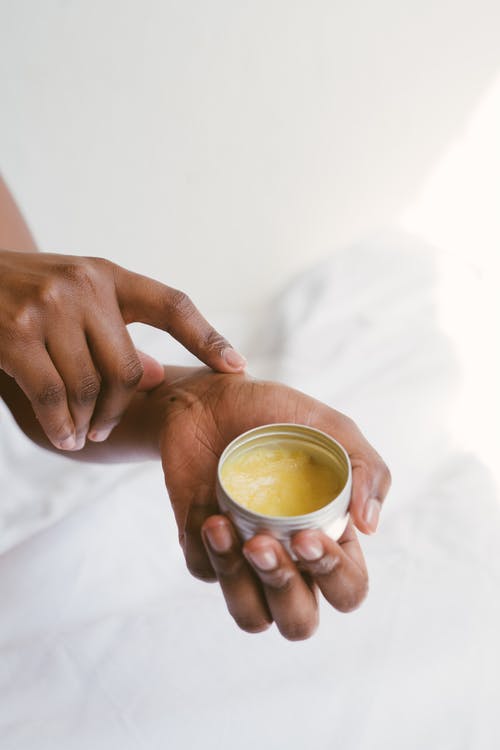Article by: Farlyn Lucas
The skin is the largest organ in the body and is responsible for many functions, not the least of which is protecting you from pathogens and other common skin conditions. With age, the skin is more susceptible to dryness, disorders, and disease, and individuals living in long-term care facilities also have an increased susceptibility to skin conditions and other issues relating to the skin.
Experts estimate that, of the 1.5 million people living in nursing homes throughout the U.S., there are 2 million infections each year associated with a higher rate of morbidity, mortality, and often, rehospitalization. Of those, skin, respiratory, and urinary tract infections are the most common. While skin infections can be challenging to address on their own, they also complicate the treatment of chronic wounds. Below are some the common skin conditions to look out for, along with the usual recommended courses of treatment.
Staphylococcus and Streptococcus Skin Infections
The two most common bacteria that cause skin infections are streptococcus and staphylococcus aureus. Group A Streptococcus may first appear as impetigo, though it can be transmitted from person to person or picked up from an inanimate object. A person first presents the bacteria with small red spots that are often itchy and are not painful. Blisters develop that break open, containing fluid that can infect others.
Staph aureus is carried on the skin of up to 30% of healthy people without an infection. When Staph causes infections on the skin, they can appear as pimples or boils and may progress to impetigo. Both infections can be treated with topical antibiotics such as Mupirocin (Bactroban). If the infection invades surrounding tissue or becomes systemic, treatment with systemic antibiotics such as Augmentin, ciprofloxacin, or tetracycline is appropriate. The antibiotic chosen will depend on the organism, and will usually be determined by a tissue culture and sensitivity.
Pseudomonas
Pseudomonas infections can present in several types of wounds, including puncture wounds of the foot, thermal burns, and chronic leg ulcers. The infection is often green in color and may progress to cellulitis, osteomyelitis, or bacteremia, with a high mortality rate from complications. When the infection is limited to the skin, pseudomonas can be treated with triple antibiotic solution or Gentamicin. Once it becomes systemic, a pseudomonas infection is often treated with Ciprofloxacin.
Anaerobic Infections
These bacteria live without oxygen and can normally be found on human skin and within mucous membranes. Because it’s difficult to culture and grow anaerobic bacteria, diagnosis requires clinical suspicion and microbiological identification. Common sites are areas where the bacteria are shielded from oxygen, such as in the pelvic cavity or under black eschar.
The best treatment is to expose anaerobic skin infections to oxygen by opening an abscess or practicing sharp debridement of a chronic wound. When antibiotics are necessary, metronidazole plus metrogel is used topically for two weeks as the most common treatment of choice.
Viral Skin Infections
Herpes is another common skin condition often found in older adults. Herpes zoster is the reactivation of the latent varicella zoster virus and is commonly known as shingles. Herpes simplex virus types 1 and 2 look nearly identical, and can appear in the genitals, lips, mouth, and throat.
Acyclovir and famvir are two antivirals that may be considered in treating these conditions. The area should be kept covered and topical silver used to prevent secondary bacterial infections. Viral infections causing warts and molluscum can be treated with cryotherapy.
Parasites
Scabies and lice are two highly-contagious parasitic infections which may complicate wound treatment.

Scabies are caused by mites that burrow into the skin, triggering itching that occurs mainly at night. People will have a rash and thick crust from over the top of the skin. Scratching can cause sores and a secondary bacterial infection to occur. Scabies can be treated with Elimite 5% solution after bathing with a repeat treatment seven days later. If multiple people and the same area are affected, treatment with Ivermectin based on weight is usually a more practical option.
It’s estimated that up to 12 million infestations of lice occur each year in children. Adults can also get head lice, and they are highly transmissible with close contact or sharing of objects, such as a brush or comb. People with lice report feeling like something is moving in their hair, and they also report itching caused by an allergic reaction to the bites, and sores on the head caused by scratching. Lice can be treated with Permethrin 1%, with a repeated treatment over the course of seven days.
Pruritic Conditions
Older adults may experience one of several types of pruritic conditions, as listed below.
Prurigo Nodularis
The exact cause for prurigo nodularis is unknown. It is a skin condition that causes hard nodules to form causing intense itching. People with this condition may scratch themselves to the point of bleeding, ultimately causing more nodules to appear. Treatment involves reducing the sensation of itching, which may be successful with steroids under an occlusive dressing.
Lichen Simplex Chronicus
Lichen simplex chronicus is a common form of chronic neurodermatitis. A person with this condition presents with dry, patchy areas that are scaly and thick, often the result of habitual scratching. There can also be psychological components to the condition, or it may be secondary to other skin conditions. Treatment may require a higher-potency steroid under cordarone tape.
Psychogenic Pruritus
Psychogenic pruritus is a disorder where psychological factors play a role in triggering the itch, its intensity, and its persistence. Differential diagnosis is difficult. The goal is to keep the skin as emulsified as possible, and to use soapless cleansers like Eucerin to reduce irritation to the area.
Xerosis
Xerosis is a medical term for dry skin, which can affect anyone at any age. It happens when the skin loses its natural levels of water and oil. It’s more frequent during the winter months with low humidity, and in people with underlying comorbid conditions such as diabetes, underactive thyroid, eczema, or psoriasis. Moisturizers can help, as can administration of omega-3 fatty acids by mouth.
Fungal Infections
Older adults are also likely to experience some of the common fungal infections, as depicted below.
Candidiasis
Candidiasis is the most common opportunistic fungal infection that may infect the skin or become invasive. A person may present with pustular skin lesions in areas which receive little oxygen, such as under dressings, between skin folds, and on the backs of patients who are bed-bound. Candidiasis can be treated with clotrimazole or Nystatin cream, and can also be prevented with miconazole powder in patients who are at high risk, such as those with diabetes.
Seborrheic Dermatitis

Seborrheic dermatitis is a common inflammatory skin condition that occurs in areas rich in sebaceous glands. These can include the face, scalp, and body falls. While it often spontaneously resolves in infants, in adults it’s characterized by a relapsing and remitting pattern, often impairing quality of life.
The lesions will be red and scaly in appearance and can be found on the head, neck, and chest where hair normally grows. Treatment includes Ketoconazole (nizoral) 2% shampoo or selenium sulfide 2.5%
Benefitting Your Practice and Your Patients
When treating common skin conditions in older adults, it’s vital to pay close attention to skin disorders, as they may indicate underlying health problems or other issues with positioning. Once the symptoms have been alleviated, possible causes should be investigated to help prevent recurrence.Skin conditions can have a huge impact on a patient’s quality of life, and solving them is an important piece of any wound care practice.
Not only will paying attention to skin conditions in older populations improve patient outcomes, but it will also help you avoid medical litigation, prevent recurring conditions, and, ultimately, heal your patient’s wounds as quickly as possible.












More Stories
Light Exercise For Arthritic Sufferers
Healthy Ways In The Management of Dementia
Parkinsons Disease and Your Diet